Safflower - what is it, how is it grown, how is it used
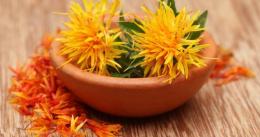
Safflower is an oil plant that has many beneficial qualities. The ancient Egyptians knew about it 3.5 thousand years BC. Back then it was used to dye fabrics. Later, the healing properties of the flower were discovered and potions began to be made from it.
Now the plant is grown in certain regions, remaining unknown in other territories. Let's take a closer look at what it is plant and how it is used.
Content:
- Description of safflower
- Useful components and calorie content of seeds
- Healing properties, use in medicine
- Role in cosmetology
- Safflower tea – who is it useful for and how to prepare it
- Features of use in cooking
- Growing a plant on your own site and basic care
Description of safflower
This is an annual herbaceous plant that belongs to the monochromatic family. The height of the shoots is about 35 cm, in rare cases reaching 1-1.5 m. It has massive stems and dense jagged leaves equipped with thorns.
Time flowering varies from June to September. The inflorescences are fluffy, orange-yellow or fiery in color, 3.5 cm in diameter. After the plant fades, white oblong-shaped seeds form in place of the flowers. The fruits are processed and an oil is obtained, which is odorless and has a slightly bitter taste.
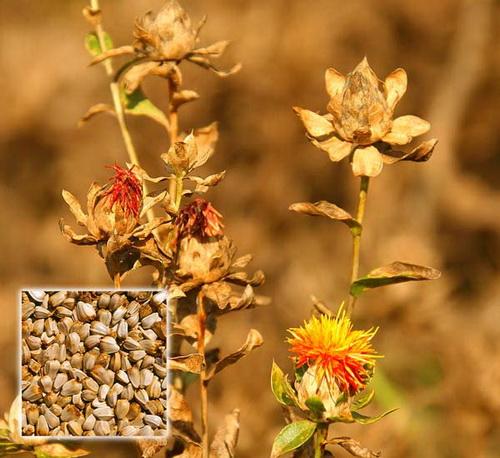
In India, safflower has gained fame as an aphrodisiac. In Europe, flowers were used to dye dishes and fabrics. Made from seeds oil has many beneficial properties. In ancient times it was used as an impregnation for mummies. Later they began to use it as a base for ointments and medicines. The drugs were used to treat heart diseases.
In the modern world, oil is involved in various industries. It is actively used in medicine and cooking. The product is enriched with a large amount of linoleic acid, which has a positive effect on the heart, blood vessels, and also normalizes cholesterol in the blood. It can be consumed even by diabetics.
Under natural conditions it grows in Ethiopia and Afghanistan. These countries are also his homeland. Cultivated flower in the south of Russia and Ukraine, the Caucasus, China, USA, India, Turkestan.
There are many plant varieties bred by breeders. Such specimens are distinguished by less pronounced “thorniness” of the leaves.
Useful components and calorie content of seeds
Safflower, seeds which are rich in useful substances is a valuable product. The oil content in the fruit reaches 40%, and the protein content is about 12%. The caloric content of seeds is more than 500 kcal per 100 g of product. The energy value of the oil is even higher - more than 800 kcal.
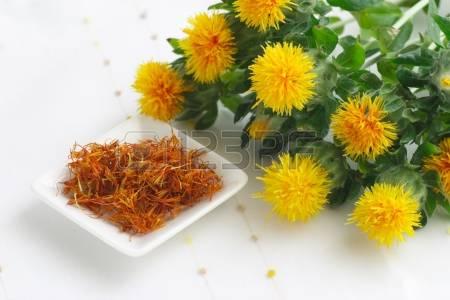
Seeds are used in various ways.
To treat diseases and promote health
There are many recipes using the plant.
In cosmetology
The oil obtained from the fruit helps cope with a large number of skin problems and diseases.
As food for poultry
The plant is used to make silage, which has high nutritional properties.
For dyeing fabrics
For this purpose, take flower petals. It is possible to dye wool, silk and cotton items red, orange or yellow.
In cooking
Safflower is suitable as a food coloring or seasoning.
The fruits contain a lot of important vitamins and microelements: vitamins A, K and E, iron, calcium, zinc, magnesium, chromium. The content of polyunsaturated acids reaches 75%. Safflower is highly prized honey, which contains the maximum concentration of healing substances.
Healing properties, use in medicine
Thanks to its beneficial components, safflower is actively used in folk and traditional medicine. It is used as an ingredient in many pharmaceutical campaigns. Application is especially widespread in Tibet and China.
Safflower has the following healing properties:
- has an antipyretic and analgesic effect
- has choleretic and laxative effects
- stops bleeding
- improves the functioning of the heart and blood vessels
- acts as an antioxidant, lowers blood pressure
- prevents atherosclerosis, normalizes cholesterol levels
The use of safflower and its products is very wide. This is an excellent antiseptic that is used for cuts, pemphigus and burns. In some countries, it serves as a hemostatic agent during the postpartum period, and treats some gynecological diseases - endometritis, prolonged absence of menstruation, endocervicitis.
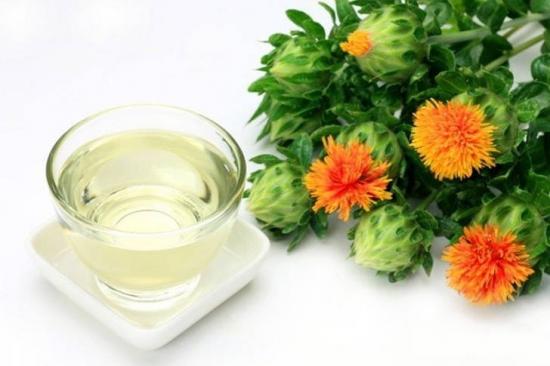
The oil can be rubbed into joints to relieve pain. Recommended for use by older people to normalize heart function. According to studies, after 6 weeks of taking the oil, most subjects noted a decrease in bad cholesterol in the blood.
Do not forget that treatment medications based on the plant must be carried out with the permission of a doctor. This product has its own application and contraindications. It has a drawback - safflower does not combine well with many drugs.
Therefore, if a person uses other pharmaceuticals, one must be careful.
Role in cosmetology
Safflower oil is widely used in cosmetology. Can be found in cosmetics for skin and hair. Thanks to the acids included in the composition (linoleic, oleic, stearic), a smoothing and moisturizing effect is achieved. The oil nourishes, softens and smoothes the skin. Helps stimulate metabolic processes and improve blood circulation, therefore it is included in elite creams and masks for the face and neck.
Found in shampoos and hair conditioners, you can add it yourself to masks or apply it in its pure form. The oil is carefully washed off from the hair using regular shampoo. The product improves the condition of dull and dry hair, gives elasticity and shine.
Thanks to the high content vitamin A E, safflower-based cosmetics are suitable for aging and dry skin. Antioxidants heal and restore damage and microcracks of the epidermis. Skin properties improve significantly with regular use.
Safflower oil is suitable even for oily skin; it does not increase the secretion of sebum, but regulates it. The product also helps even out skin tone, strengthens capillaries and refreshes color. The oil serves as a conductor for other components, enhancing their effect.
Tea – who is it useful for and how to prepare it
It is a very common practice to cook from safflower. tea. The drink has been popular for many centuries. Its main property is a noticeable diuretic effect. Since ancient times, it has been used to treat and cleanse the kidneys.
The tea is also believed to be beneficial for those suffering from heart failure or anemia. To get results, you need to drink the drink for 1-1.5 months.Tea is prepared from flower petals as follows.
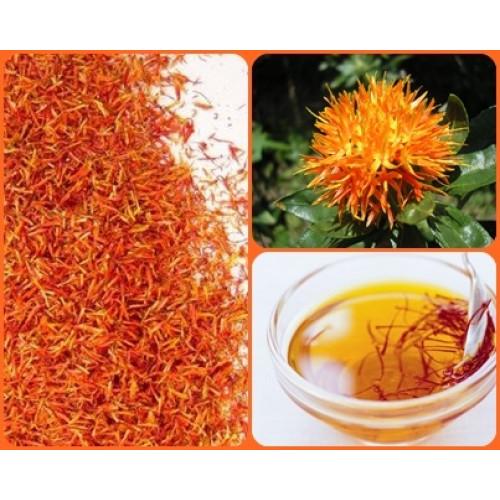
Method 1
To prepare the drink 0.5 tsp. raw materials are poured with a cup of boiling water and left for half an hour. The product cleanses and restores the intestinal walls, has an anti-inflammatory effect and improves the condition of the skin. Tea calms and relieves stress after a hard day. Therefore, it is recommended to drink it at night. Drinking several cups per day is allowed.
Method 2
Pour 1 tsp. raw materials with 1 liter of hot water and boil for several minutes. You need to drink 4 glasses a day. This recipe is recommended for people with significant skin diseases (for example, psoriasis). The finished product should be stored in the refrigerator.
Please note that this drink should not be combined with other medicinal infusions and teas. And you need to store it in a cool, dark place.
Features of use in cooking
Safflower is used in cooking in various ways. It is not for nothing that it is called wild or American saffron, because it can successfully replace this spice.
Fried fruits and petals of the plant are used as food. Used as a seasoning for beef, pork, and fish dishes. Safflower is especially popular in Georgia for this quality. Added to snacks made from vegetables, beans and walnuts. Adds an unforgettable flavor to spit chicken, pizza, chicken. In Latin America, dried leaves of the flower are added to rice dishes and stewed vegetables.
Different varieties are used in cooking. Imeretian safflower leaves are added to salads. Shoots are also used when preparing marinades.
A natural dye of yellow-red or saffron color is obtained from the flowers. It is used to add interesting color to desserts, sauces, baked goods and jellies.
The most popular culinary product is oil, which is used by chefs in different parts of the world. Suitable for frying and deep-frying food.
The oil is involved in the production of high-quality margarine. In its pure form it is used for dressing salads. This oil does not harden even at low temperatures.
Safflower oil does not have a distinct taste, but has a light floral aroma. Can be used in dietary nutrition.
Eating the plant will help diversify your diet and make it more vibrant. In addition to improving taste, we get benefits for the body.
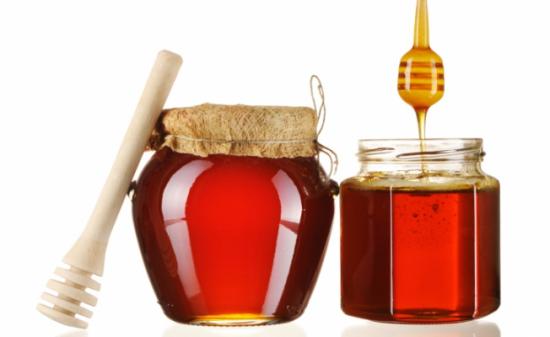
Growing a plant on your own site and basic care
Safflower is very easy to grow in your own garden or summer cottage. The plant is unpretentious and caring for it is not difficult.
Landing
Reproduction occurs by seeds. Planting in the ground is carried out in early spring. Seeds can germinate even at a temperature of a couple of degrees Celsius. The sprouts can withstand light frosts down to -6 C. Planting can be postponed until autumn and even early winter.
Sprouts begin to emerge from the ground 1.5 weeks after planting. Under favorable weather conditions, flowering begins in 2-2.5 months. You can wait for mature seeds no earlier than 3.5 months.
Grown safflower loves light and warmth. Warm summer is a constant condition for flowering. Coolness and rain do not promote ovaries and seed formation.
Flowering occurs unevenly. The inflorescences in the center bloom and set first, and later - the lateral ones. Ripe seeds sit tightly in the baskets without spilling out.
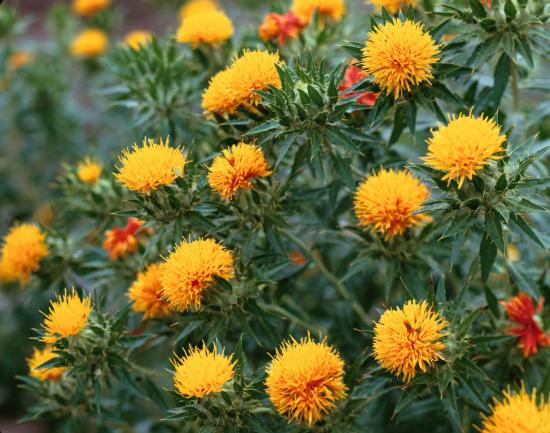
Watering
Safflower does best in mild drought conditions. For him, there is nothing worse than excess moisture and a swamp in the garden.Powerful roots and fleshy foliage retain water well. Often you can get by with natural precipitation. Watering is needed only during the formation of buds and before the appearance of seeds in cases where there is no rain for a long time.
Soil and fertilizer
The plant can grow well in almost any soil. Under natural conditions it grows in salty soil that is not very fertile. If you want to get a really rich harvest, it is advisable to plant in black soil. Safflower grows well in sandy and loamy soil.
The flower should be fertilized once a month with ready-made mineral fertilizers. Feeding is especially necessary during the planting period and seed germination. It should be borne in mind that only those specimens that are grown for decorative purposes are fertilized. If you plan to use the flower for ingestion and healing, leave it to grow naturally.
Diseases and parasites
The most common problems are rust, septoria and root rot. It is very important not to overdo it with watering. If fungal infections are detected, treat with fungicides.
Among the pests, the greatest damage is caused by safflower. front sight, which damages the bud and lays eggs directly. Aphids and weevils are also found. To combat parasites, special preparations are purchased.
Despite the many beneficial properties and taste qualities, not all flower growers know about safflower. The flower is cultivated not only as an ornamental plant. It is a source of nutrients, a medicine and a seasoning at the same time.
It is used to make oil, make tea, and use it as a food coloring and seasoning for food. It is quite possible to grow a flower on your own plot.With a little effort, you can get a rich harvest in the fall.
More information about safflower oil can be found by watching the video:

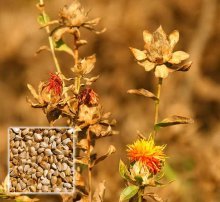
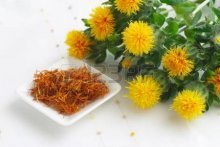
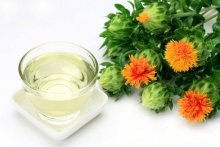
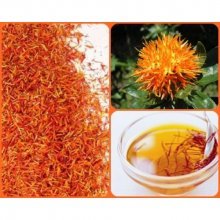
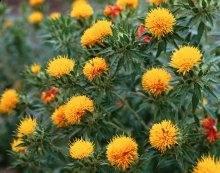
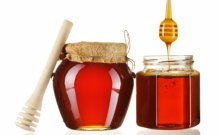
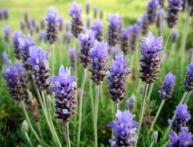
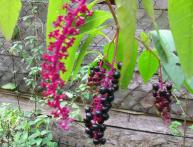
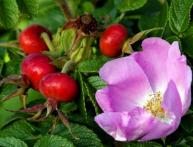

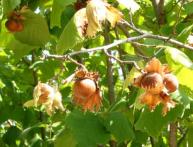
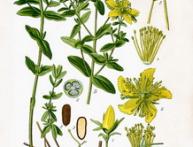


Comments
I have been familiar with safflower tea for several years and we use it as a therapeutic diuretic. The tea is effective and within a few months it was able to replace the drug Veroshpiron.
Safflower tea is a diuretic, and to prevent magnesium from being washed out of the heart, it must be taken in parallel with Asparkam tea, then the heart will receive all the necessary substances for normal functioning.
I didn’t expect this plant to have such wide applications. I’ve never seen it in our region, maybe I just didn’t pay attention to it. In any case, I hope that its collection can be found in the pharmacy.